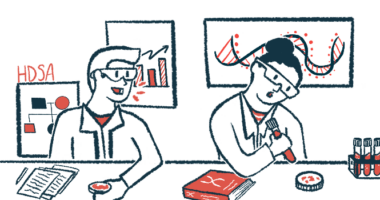Consortium Will Promote Stem Cell Therapies

A new international consortium, Stem Cells for Huntington’s Disease (SC4HD), has been formed to help facilitate the development of stem cell-based therapies to treat the disorder.
The consortium was presented in the Journal of Huntington’s Disease, in the paper, “Stem Cells for Huntington’s Disease (SC4HD): An International Consortium to Facilitate Stem Cell-Based Therapy for Huntington’s Disease.”
Huntington’s disease is characterized by neurodegeneration — the progressive death and dysfunction of cells in the brain, particularly in a part of the brain called the striatum.
Stem cells are a specialized kind of cell that, when given the proper biochemical cues, are able to grow and transform into other cell types. The general aim of stem cell therapies for Huntington’s is to use stem cells and/or their relevant biochemical cues to restore lost cells in the brain to prevent further loss of brain cells.
“There is an exciting opportunity to apply stem cell-based therapies in Huntington’s disease,” Josep M. Canals, a member of SC4HD’s steering committee, said in a press release.
Stem cell transplantations have shown some promise in preclinical animal models of Huntington’s disease, and recent studies have shown that human stem cells can be transplanted successfully and safely into people with Huntington’s. However, getting transplanted cells to grow and thrive remains a challenge.
While research on stem cells for Huntington therapies is still in relatively early stages, these preliminary findings suggest that such therapies may be feasible in the not-so-distant future. In light of this, a group of researchers formed the SC4HD.
“The overall goal of the SC4HD consortium,” according to the new paper, “is to define the challenges to be addressed across the spectrum of cell manufacturing, preclinical assessments and clinical application, to enable the promise of stem cell-based therapies to be transplanted in the brain for treatment of HD.”
The SC4HD consortium first met in 2018. At a meeting a year later the group consolidated its aims and determined its overall goals, which were outlined in the paper.
Goals of the consortium include: defining the principles needed to move a potential therapy into human testing (e.g., finding appropriate preclinical tests that are indicative of efficacy in humans); optimizing the production of a cell-based therapy, including strategies for manufacture and scale-up; figuring out the best way to deliver a therapy into the brain; and determining the best way to design clinical trials to test investigational cellular therapies.
The SC4HD consortium plans to hold regular meetings, including dialogues with patients, advocacy organizations, and other members of the Huntington’s community, in pursuit of these goals.
“The goal of SC4HD investigators is to work together with the [Huntington’s disease] community to develop criteria and guidance and address these challenges to rapidly and safely bring potentially beneficial neural intra-cerebral stem cell-based therapies to patients with this devastating disease,” the researchers concluded.
More information about SC4HD, including information about future meetings, is available on the organization’s website.






